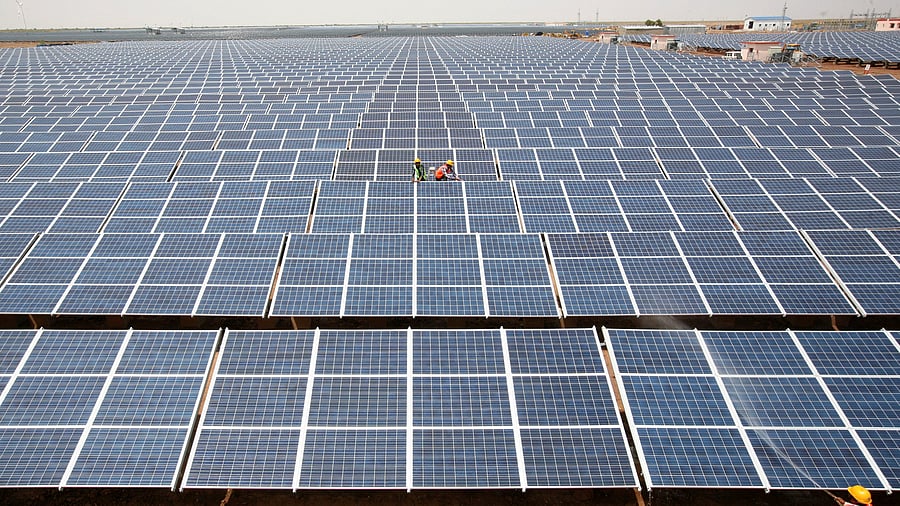
Workers install photovoltaic solar panels at the Gujarat solar park under construction in Charanka village in Patan district of Gujarat.
Credit: Reuters Photo
Bengaluru: Renewable energy is continuing to lead new energy capacity installations in India with the current financial year (FY25) seeing solar energy contributing a larger part of the 30 gigawatts (GW) total energy capacity created, according to India Ratings and Research.
Overall, energy capacity is expected to reach around 470 GW in FY25, the company said in a webinar on Tuesday. Currently, it is at 457 GW (as of November 2024).
Solar energy capacity in the country is expected to go up by 20-22 GW this fiscal.
On the other hand thermal energy capacity will go up by around 2.5-3.5 GW this fiscal. Of course, India continues to be heavily dependent on thermal power, with it accounting for 75% of the energy production.
Renewable energy, powered essentially by hydel source, accounts for just 22% of the country’s total power production. This is expected to move to 35-40% by the end of 2030.
Coming to energy demand, in the first three quarters of the fiscal (9M FY25), there was a stark moderation in the energy demand, with one reason being lower economic activity particularly during the second quarter. Energy demand grew by 4.5% so far and is expected to reach 5-5.5% growth by the end of the fiscal year. In the previous financial year, the demand grew by 7.5%.
For the month of May, however, peak demand reached 250 GW, which is almost 13% higher compared to the previous year. Despite the rise, there was stable supply with proper management of coal supply, including imported coal, rendering peak deficit almost nil.
